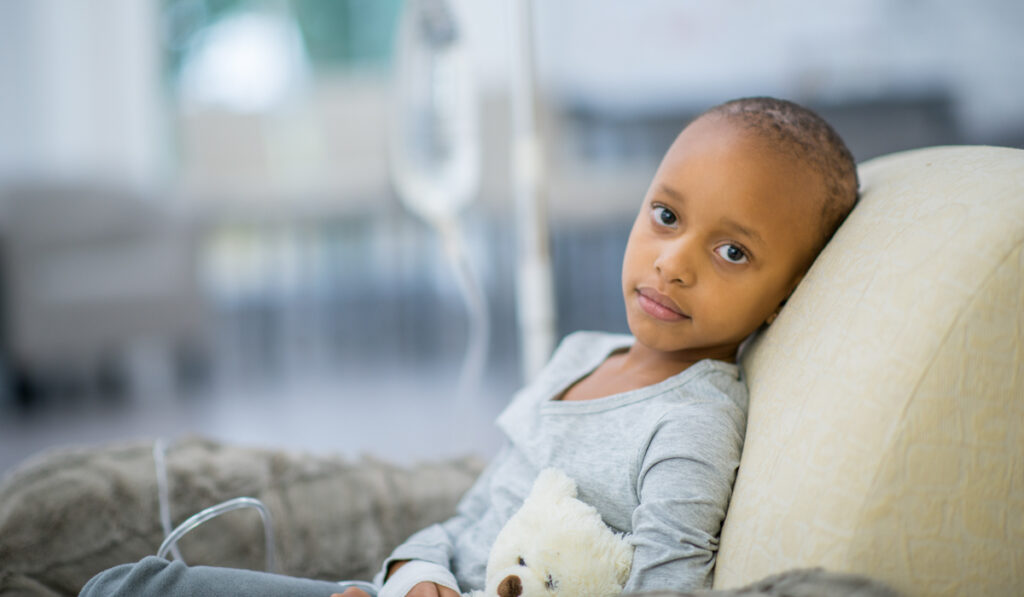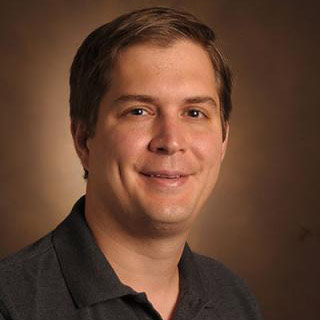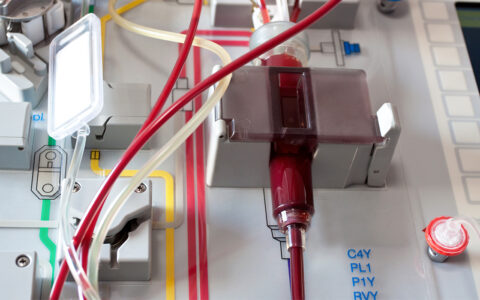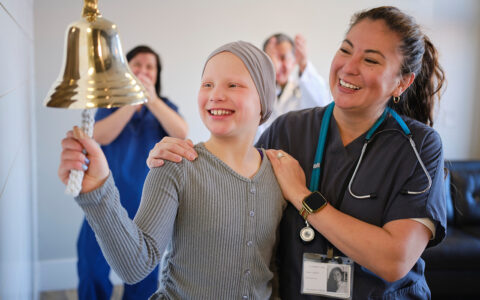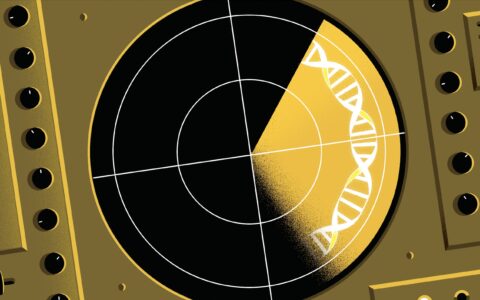Pediatric oncologist Adam Esbenshade, M.D., M.S.C.I., and team at Monroe Carell Jr. Children’s Hospital at Vanderbilt have significantly trimmed the use of antibiotics for pediatric oncology patients with fever using an original risk-prediction model.
By using the Esbenshade Vanderbilt second generation (EsVan2) model, antibiotic use reduced by approximately 70 percent when patients presented with fever but did not have a severely low white blood count. The cases were all within the Monroe Carell system and all were considered low risk for bacteremia, Esbenshade said.
The model was developed through a long-term commitment to curbing excess antibiotic use in children with cancer. A series of iterative versions were developed for clinicians to use in predicting bacteremia risk in febrile patients with solid tumors and some forms of blood cancers who are not severely neutropenic (absolute neutrophil counts above 500/µL).
Recently, the team examined their model’s performance in predicting these infections in autologous and allogeneic stem cell transplant (SCT) recipients.
Their findings, published in Cancer, demonstrate that the EsVan2 model appropriately categorized risk in autologous transplant patients. While EsVan worked fairly well with allogeneic patients overall, some high-risk patients were misclassified. This led to an adjusted model (EsVanAlloSCT) that Esbenshade now will be testing across multiple institutions.
“This was very important to do, because institutional treatment practices can vary widely,” he said. “We found that the EsVanAlloSCT appropriately classified the allogeneic group in our single-site study. We are now recruiting 15 to 20 additional sites to see if we need to make any further adjustments.”
EsVan Models
Esbenshade has worked with Vanderbilt biostatistician Zhiguo (Alex) Zhao, M.S., for over 10 years developing, piloting and externally validating EsVan models to give clinicians a one-stop site to use in determining whether a patient is at low, intermediate or high risk of a bloodstream infection.
In a prospective validation study published in 2024, he and his team demonstrated that their most recent model functioned well for non-neutropenic cancer patients (excluding allogeneic SCT) across 18 sites and over 2,500 episodes.
“This model is very well-calibrated in accurately predicting the low or intermediate risk, and then it slightly overpredicts at the higher end, allowing more conservative care where the stakes are the highest,” Esbenshade said. “In non-SCT patients, there is about an 86- to 88-percent chance the child is in the low-risk category. About 10-15 percent are in the intermediate category and about 2 percent fall into the high-risk group.”
“This model is very well-calibrated in accurately predicting the low or intermediate risk.”
Autologous versus Allogeneic
Extending the models to stem cell transplant patients, a population highly vulnerable to infection and illness severity, was an important next step.
In autologous stem cell transplant, patients receive high doses of chemotherapy and are then rescued by infusions of stem cells recovered from their own bone marrow. However, allogeneic SCT patients essentially have their immune systems deleted and replaced with allograft stem cells, requiring greater immunosuppression to lower the risk of graft-versus-host-disease. Thus, they are more susceptible to infection.
Esbenshade explains that the higher level of immunosuppression in allogeneic SCT effectively lowers the white blood cell count and may mask some symptoms of infection. This might make some children appear to be in a safer position than they really are.
Vanderbilt Study
Esbenshade conducted a single-site study of 429 febrile SCT episodes – 221 autologous and 208 allogeneic – in children who had a SCT and a central venous catheter between May 2005 and November 2019.
They found that the incidence of bloodstream infection was higher in allogeneic transplant patients than autologous transplant patients, 25.5 versus 14 percent respectively. The EsVan2 model worked exceptionally well when applied to autologous SCT, but less well for allogeneic SCT.
“The models predicted that several allogeneic SCT patients were at low risk when they were actually getting some pretty significant bacteremia,” he said. “So, we were misclassifying a significant number of high-risk patients.”
The team then applied a new model, EsVanAlloSCT, that adjusted for metrics of immunosuppression in this group. This revision demonstrated an improved predictive capacity for the allogeneic SCT population. More of these children were shown to be at intermediate risk or higher, warranting antibiotic administration.
Impact on Practice
Until the EsVanAlloSCT is externally validated, clinicians at Monroe Carell are still giving antibiotics to all febrile allogeneic SCT patients.
Esbenshade cautions that how the child appears speaks volumes.
“If the child is ill-appearing and you think their risk of BSI may be high, they should be given an antibiotic – but a broad-spectrum drug like levofloxacin or cefepime, not one like ceftriaxone that is commonly used but only covers 45 percent of isolates.”
Ease of Use
Esbenshade is at work creating a separate link off the main EsVan2 model, so a clinician can access the adjusted EsVanAlloSCT model if a patient has allogeneic SCT. Ultimately, he plans to enable an automatic connection with the appropriate model, based on the clinician’s input.
Esbenshade’s work also extends to treatment of neutropenic cancer patients who present with fever.
“The goal is that for everyone who comes in with a fever, we have guidance for how to handle it,” he said.

